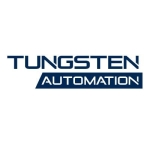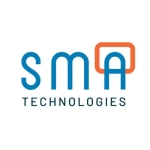There are many great features in UiPath that our clients consider valuable. I definitely like Studio. The Studio's a very powerful product, which helps very easily to build automations. Nowadays, there's also a StudioX for citizen developers, which doesn't require coding.
Orchestrator, which helps users monitor and schedule robots, manage assets, credentials, et cetera, is also very useful.
The third feature worth mentioning, I would say, is Insights. It is reporting and dashboards. Once the robots are running, it is quite valuable to see how those robots are performing. You can see KPIs and other aspects of both robots and processes.
Worth mentioning is the Automation app, which helps to manage the automation initiative end to end, especially building the pipeline and collecting the ideas.
It is quite easy to build automations with UiPath, especially now that they are segregated depending on seniority, meaning that you have the regular Studio and Studio Pro, which are truly for developers, however, you also have StudioX, which is more for people without a previous coding background. That makes it quite easy to use. People with a business background find it quite easy to pick a tool up and use it in daily automation. They didn't have any previous experience with programming or making macros or whatever else, and still, they have no problem with UiPath.
UiPath enables users to build end-to-end automation, and this is what we are doing on a daily basis. UiPath enables mainly our clients (through us) to build end-to-end automation in their processes. When I mean end to end, I mean that we help them to automate the chain of processes and do not focus on the single practice itself.
End to end coverage within UiPath is a great advantage and offers great possibilities. It is really important to have the ability to do end to end. Though it is not applicable all the time, it still is a nice option to have and use when needed.
Very soon after starting the RPA journey, customers realize much more important benefits than time-saving itself and FTE saving or FTE reduction. There are things that happen, like quality improvement. Whenever the work is done by robots, it is running in a much more stable manner and without any human mistakes and errors. It is also sustainable, predictable work, meaning that robots do not get sick or have a bad day, or face conflicts with each other, et cetera. They just do their work. They also can’t get viruses, such as COVID which means that we don’t have to worry about losing staff.
We have a customer speech workload that was growing dramatically in relation to COVID and having processes already automated, it was very easy to sustain and even upscale the delivery. The customer experience is better as well. It is not only important to spend less time or fewer resources in delivering the service to the customer, it is also important that the customer gets a quick response. Overall, the customer experience can be much improved when using robots in the processes.
In terms of the Automation Cloud offering, UiPath handles infrastructure maintenance and updates to save time for our client's IT department. Having UiPath in a cloud enables enterprises and customers to focus more on the automation initiative itself, instead of managing all the hardware and dealing with all their hardware problems and having more or giving more time to the IT department. Instead, you can use everything out of the box from day one and focus on bringing benefits to your end customer or end employee.
The Automation Cloud offering has helped to decrease time to value from UiPath. I would say that Automation Cloud increases time to value dramatically in the sense that you can start from day one. Literally day one, you can go and start automating the processes without bothering with all the infrastructure topics. The time required to deliver the first benefits is reduced dramatically.
Automation Cloud’s offering helps to decrease the solution's total cost of ownership by taking care of things such as infrastructure maintenance and updates. It helps to reduce the cost of infrastructure maintenance, especially in the early stages of the projects, as well as on small and medium projects (for the long term). Not all customers or enterprises have strong IT departments or strong infrastructure in-house nowadays. Even large enterprises are moving more and more towards cloud services, even though they have strong IT infrastructure teams in place.
Automation Cloud is able to scale well due to the fact that we can, in a matter of minutes, or, in the worst case, hours, double the capacity. I would say that it positively and dramatically affects the scaling factor.
UiPath is a SaaS offering. It enables our customers to really quickly adapt and start using the technology almost from day one. It is very easy to start developing. It is very easy to start.
We are using UiPath Apps for our customers. However, this feature has not yet helped to reduce the workload on our IT department, or on our client's IT department by enabling end-users to create apps. Mainly, we are still involved as a service provider in the creation of the apps for the end-users. That said, where it brings added value is it reduces the limitations or the need to have an additional user interface, as you can create this app or user interface directly in UiPath to have an even better user, employee, or even customer interaction.
UiPath apps definitely increased the number of automations created. You can take more into the scope, what wasn't there before, with just attended or unattended automation, considering the fact that you can build a better user interface or any user interface from the very beginning. Before, there were only simple message boxes and prompts. Now, you can build really nice forms to interact with your end-users. It helps to accelerate initiatives.
Our teams have used UiPath’s Academy courses. Every team member of our company went through UiPath Academy. We always start with and actively involve UiPath academy.
UiPath Academy courses are a part of our standard onboarding procedure in the company, especially if we onboard junior developers. The very first thing we direct them to is UiPath Academy. Everyone starts with a basic foundation and goes through to a diploma and certification, and only then will we build on top of that more specifics about our standards, of our delivery approach, et cetera. I would say that UiPath Academy is a core and basic start for each and every employee in the company. Based on that education, we will later elaborate on different topics.
The biggest value I see behind UiPath Academy is its simplicity in terms of delivering the information. Even if you don't have any previous development experience and coding experience, all the explanations, videos, practical tasks, and reading material is formed in a way that is really easy to understand. The biggest value I see is its ability to bring people up to speed from really different levels, including very, very junior people with no previous experience in coding, programming, or the creation of robots.
UiPath's user community is excellent. Being an MVP, for me, the community has huge value in the whole end-to-end journey of RPA. Meaning that, at the very beginning, whenever you need to learn new things, you can always find a lot of useful hints in the forum and in the community. Later, when you already have delivered some solutions, you might face some problems. Luckily, very likely, you are not the first person to face those problems. There is always someone who already has had this problem and may have even raised it in a forum or on YouTube, et cetera. Even when you are already deep in delivery, sooner or later, there will be a point where you reach out for help to the community. The community, therefore, plays a crucial role for developers and automation specialists - be it business analysts, developer architects, et cetera. Having a strong community is definitely one of the most important factors that sets UiPath apart.
I'm not actively involved in other communities, and therefore wouldn't be able to compare UiPath to other similar communities. I can only say that the UiPath community is very supportive and very active in responding to any queries. The way it’s organized, it’s inspiring the next generation of forum members to help others and pay forward with insights based on the help they receive. UiPath’s community is really responsible and supportive.
In terms of reducing human error, at the very beginning, almost every company when starting the RPA and automation in Germany thinks of FTE saving as the main benefit. However, very quickly they recognize how huge the value is behind the quality improvements that happen after automation. It is quite obvious that robots are not doing human-like mistakes that may be caused by, for example, not paying attention or not getting enough sleep et cetera. Robots also cannot get bored. Very often, and whenever you have to process 1,000 or 10,000 records in more or less the same manner, it just becomes super repetitive. A mistake can appear in manual work as humans can lose focus on redundant tasks. This is not so when robots are involved.
In terms of time savings and error reduction, usually in our initiatives, we can see not higher than 5% of error rates when executed by robots. Even in those cases, I wouldn't say they are errors and more likely exceptions, which are documented and later handed over with specific explanations. A good KPI for our robots is to have less than a 5% exception rate. Related to this is that, by improving quality, we still save a lot of time as it can reduce the number of reworks which we might have afterward. For example, in one of the projects we were delivering, it reduced by eight times the amount of reworks or fixes, which the customer needed to process due to human-directed errors. Mistakes and fixes, therefore, were reduced by eight times.
What I would improve in UiPath, or I would just say, keep on improving, is the other products in end-to-end automation. UiPath started with Studio and Orchestrator as a core product, and still, we are actively co-operating UiPath and suggesting improvements for the other products.
One of the products where I would definitely see a need for improvement would be a Task Capture. It is already good, however, there are many aspects and many ideas, which, for example, our business analysts have, which can be improved.
Comparing the initial setup on cloud versus on-premise, the cloud configuration is much easier. This is one of the purposes of the cloud solution. It's meant to be easy to deploy and easy to scale. Documentation for the cloud is definitely straightforward. In terms of on-premise deployments, it is also quite straightforward, especially at the start, however, the complexity grows with the demands and requirements from the customer. If we have to get into the area of high availability and more of a complex server setup, it takes some effort to establish everything.
The simplest deployment on the cloud would take a matter of 15 minutes or maybe even as little as five. After five minutes you are ready to go and can use Studio and the cloud Orchestrator. It is very fast. You still need to have your admin rights available on your PC, however, that's the only prerequisite.
For deploying on-prem, it's nearly the same for a simple deployment. If you only want to use the Studio and attend the job, it is very easy to configure in a matter of 15 minutes. Whenever you get into Orchestration, it will require more complex setups. It might take one or two days to set up, depending on how good of an infrastructure team you have to onboard.
The strategy in implementation remains the same no matter which deployment. In the end, you still have the same setup of products, be it Studio, Orchestrator, Task Capture, or whatever else. You have the same configuration of the products. It is only on the backend that is slightly different as it is hosted in another place. You don't really recognize the difference between cloud and on-prem hosted services.
The good thing about UiPath is that they are very active when it comes to listening to feedback. Every release incorporates some of this feedback into the product life cycle.
We are using both UiPath's Automation Cloud offering and the on-premise solution. We have customers, which need on-premise as well as customers which are running it in the cloud. On-premise, we have clients using different versions, however, it's my understanding that we are using version 2020.10.
I would definitely recommend, when starting the RPA journey, to start to use UiPath. Think about RPA as a robot factory, as a strategic thing, however, do not focus on one or another process. Think big and aim for automating all the manual processes in the corporation and from day one, and work to adjust all your procedures and infrastructure, the way that you've been able to get to this point. Do not get stuck at some point and feel you need to rework anything. Rather, change your standards in order to scale. In fact, aim for scalability from day one.
I'd rate the solution at a ten out of ten. We are a happy partner of UiPath and we have had many successful implementations with our customers. I can confidently say, after five years of experience using UiPath, that I've been happy with it. I still believe that there is always space for improvement. However, I really do have an appreciation for the tools. They're making a really good product and they should keep on improving at the same great pace. We plan to keep on using this product to deliver the same great services to our customers.


















